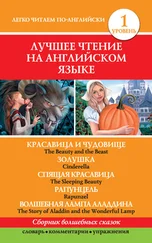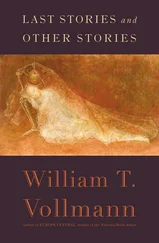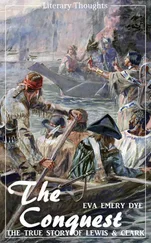276: Remarks of Kenneth Clark — Op. cit., pp. 75, 20–21.
276: Footnote: “Not that the Esquiline girl…” — Ibid., p. 75.
276: “That search for finality of form”… — Ibid., pp. 74–75.
277: Citations from Sei Shonagon — Op. cit., pp. 110, 84.
277: Description of Thorgunna — Eyrbyggja Saga , p. 130.
277: Description of Thorgerd — Egil’s Saga , p. 202.
277: Gold- and jewel-related kennings for women, Sif, Freya, etc. — Sturluson, pp. 114, 115, 96, 30, 94. By puns, women are also referred to with feminine names of trees such as willows, birches, lindens (pp. 94, 116). Women used to wear chains of stones around their necks, so stone, gem and the like is another kenning for women. Women can be called forests, flood-fire-keeping Sifs, mead-Hrists (p. 115).
277: Footnote: “So dear are you, sea-Freya…” — Sagas of Warrior Poets , p. 49.
278: Praise of Oddny Isle-Candle — The Saga of Bjorn, Champion of the Hitardal People , in Sagas of Warrior Poets , pp. 160–61 (in the second citation she is actually “Hrist of the hand-fire”).
278: Praise of Helga the Fair — The Saga of Gunnlaug Serpent-Tongue , in Sagas of Warrior Poets , pp. 139, 135.
278: Citations from Laxdaela Saga — Op. cit., pp. 60, 61, 64, 118, 109, 156, 188.
278: Description of Kojiro’s “Ataka” — After a performance I saw in 2002.
279: Footnote: Lady Murasaki’s diary — Op. cit., p. 56.
280: Hallgerd “was very tall…” — Njal’s Saga , p. 55.
280: Extracts from Viglund’s Saga — Sagas of Warrior Poets , pp. 254, 261.
23: PASSING LIGHT
282: “Frozen motion” + “nothing is frozen” — Wyeth (Wilmerding), pp. 172, 174 (Wyeth’s words).
283: “A similarity of stroke and surface…” — Wyeth (Wilmerding), p. 23 (John Wilmerding, “Andrew Wyeth’s Helga Suite ”).
283: Description of “Farm Road” — Ibid., pp. 138–39.
283: “There’s grace in my work like spring flowers…” — Quoted in Meryman, p. 232.
283: Wyeth’s first acquaintance with Helga — Ibid., p. 324.
284: “Nobody knows her…” + “the same slight coarseness…” + “a picture of a whore sitting there…” — Ibid., p. 330.
284: “Letting Her Hair Down” — Wyeth (Wilmerding), p. 35.
284: Helga: “I became alive…” — Meryman, p. 336.
284: “And now I meet this girl…” — Ibid., p. 338.
284: “She was an image I couldn’t get out of my mind.” — Ibid., p. 339.
285: “I felt the country, the house…” — Ibid., p. 355.
285: “Whoever she is to us…” — Wyeth, p. 338.
285: “If I control it, it’s no good.” — Corn, p. 85 (E. P. Richardson, “Andrew Wyeth’s Painting Techniques”).
285: “Braids” — Wyeth (Wilmerding), p. 147.
285: “I’d painted those braids beautifully coming to the fine end… “ — Meryman, p. 354.
285: “Taking the lids off the boxes…” — Ibid., p. 369.
286: “Wyeth’s memory of his father in the coffin…” — Ibid., p. 224.
286: Description of “Night Shadow” — After the plate in the same book, p. 343. Since this painting is not part of the Helga Suite it is not reproduced in Wilmerding.
286: “Who the fuck is this woman?…” — Ibid., p. 370.
286: “Now her sturdy features and sober demeanor…” — Wyeth (Wilmerding), p. 22 (Wilmerding’s words).
286: “It’s not just anybody lying there…” — Meryman, p. 348.
287: Description of the ko-omote copied by Deme Yasuhisa — Hori, Masuda and Miyano, trans. for WTV by Yasuda Nobuko (and slightly revised by me), p. 32. (The visual description, of course, is mine.) After mentioning the “girl in the box,” when I say that the description “continues,” in fact I have misstated for rhetorical purposes, for in the original the “girl in the box” bit comes second, not first. “Kanze Kiyokazu says, ‘Typical female masks used in our performance style express young women, but we use this when we want some lovely and light look. This perfect ko-omote mask can withstand the role of shite , such as the tidy and pure Tennyo in “Hagoromo.” Actually, if this is used for the tsure , its presence might overwhelm the shite .’ ”
288: The Perfect Fluency “has no connection… with the actor’s conscious artistic intentions. ” — Zeami, p. 135 (“Shugyoku tokka”).
288: “… the thing that expresses the way I feel at a particular time…” — Wyeth (Wilmerding), p. 39.
288: “Too real for some people…” — Wyeth, Autobiography , p. 114 (re: “Overflow”).
289: “Fluid and fluctuating… “ — Corn, p. 14 (Brian O’Doherty, “A Visit to Wyeth Country”).
290: “The individual self striving to realize all things…” — De Bary et al., p. 325 (Dogen, “The Fully Apparent Case” [Genjo Koan], 1231). Italics mine.
290: “The gateway to something beyond…” — Ibid., p. 265.
24: WHO IS THE WILLOW TREE GODDESS?
294: “Thinking heart is saddened.” — Bethe and Emmert, Noh Guide 3, p. 8 (literal translation).
25: SNOW IN A SILVER BOWL
297: Description of Radha’s charms — After Jayadeva, pp. 84–85 (III, stanzas 12–15).
26: BEAUTY’S GHOST
298: The two sketches of Ono no Komachi — Hokusai, Encyclopedia: Men and Women , p. 216, no. 3 (Ono no Komachi and Noin, poets in Heian period, both included in the 36 major poets); p. 234, no. 3 (Sekidera Komachi, one of seven legends around Ono no Komachi).
298: Illustration from Hokusai’s version of the Hundred Poets anthology — Op. cit., p. 42.
299: Zeami’s remarks on the “flower” — Op. cit., pp. 20–21, 51, 60.
299: “Whether it is because the faith which creates has ceased to exist…” — Proust, vol. 1, p. 201 (“Combray” part of Swann’s Way ).
299: “Endless strength and inconsolable sadness…” — Serano, p. 280.
300: Description of a seventeenth-century zo-onna — Tokugawa Art Museum, Noh Masks and Costumes , p. 26 (plate 41).
300: “The most important accomplishment for a beautiful woman is to be able to write poetry.” — Lady Nijo, p. 113.
300: Biographical data on Komachi — Keene, Seeds in the Heart, pp. 234–35.
300: Komachi’s poem about the breast illuminated with desperate fire — Brower and Miner, p. 206 (“ Hito ni awan …”)
301: The ukiyo-e painting of Komachi — Ota Memorial Museum of Art, 1988, plate 10 (Matsuno Chikanobu, “The poetess Komachi washing the anthology to disprove false charge of plagiary” [ sic ]). In another version of the same scene, the background is a sandy gold and the surface of the water in the basin is also gold with parallel wiggles of ink, as if in preparation to marble paper. — Clark et al., p. 138 (Okomura Masanobu, “Ono no Komachi Washing the Manuscript,” ca. 1711–36).
301: Sei Shonagon’s reference to Komachi (Fukakusa no Shoso’s death) — Op. cit., p. 243.
301: Description of Komachi’s charms in “Sotoba Komachi” — Pound and Fenollosa, p. 14.
301: “A young girl’s trailing white robe, worn over a lavender chemise.” — McCullough, p. 167.
302: “Surrender to you…” — Sato and Watson, p. 113 (“retranslated” by WTV).
302: “It is good for a woman to realize that once she grows old…” — Makuzu, pp. 174–75.
302: Description of background pages of a Genji Picture-Scroll — Tokugawa Museum, Genji Monogatari Emaki , pp. 78, 38, 24.
303: Komachi’s reply to Bunya Yasuhide — The poem appears in full in Brower and Miner, p. 222.
Читать дальше












